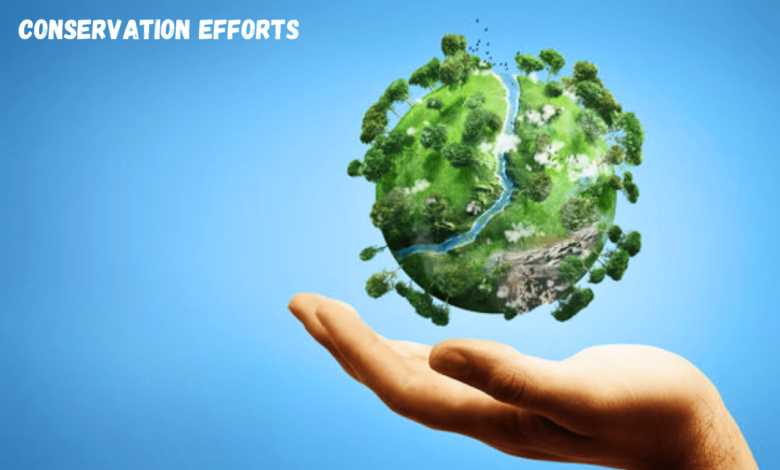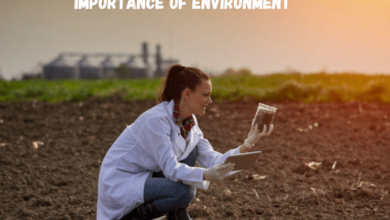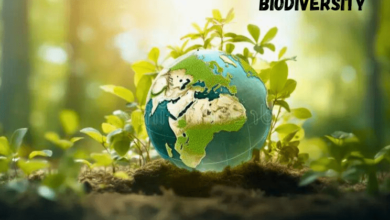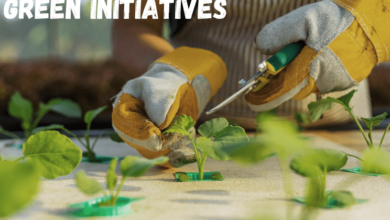Conservation Efforts: Unveiling for a Healthier Planet

Conservation Efforts: In a world increasingly aware of the environmental challenges we face, conservation efforts have taken on new significance. With climate change, habitat loss, and species extinction threatening the delicate balance of our planet’s ecosystems, it has become imperative to explore innovative and effective ways to protect and preserve our natural environment. This article delves into the most unique and inspiring conservation efforts from around the globe, highlighting the importance of collective action in safeguarding our planet’s health.
The Power of Reforestation
The Amazon Rainforest, often referred to as the “lungs of the Earth,” has long been a focal point of conservation efforts. Organizations like “Rise for the Rainforest” have embarked on a mission to reforest vast stretches of land that have been devastated by deforestation. Their approach involves community engagement, ensuring that local communities actively participate in planting and nurturing trees. Not only does this restore critical habitats, but it also empowers local residents and creates sustainable livelihoods.
Ocean Conservation through AI and Robotics
Marine life faces unprecedented threats, from overfishing to plastic pollution. Conservationists are now turning to artificial intelligence and robotics to combat these challenges. The “Ocean Guardians” project employs autonomous underwater vehicles (AUVs) equipped with AI algorithms to monitor and protect marine ecosystems. These AUVs can identify and remove marine debris, track illegal fishing activities, and monitor the health of coral reefs, contributing to the preservation of our oceans.
Rewilding and Species Conservation
Rewilding has gained traction as a novel approach to species conservation. The “Yellowstone to Yukon” (Y2Y) Conservation Initiative is one such project that aims to reconnect and restore habitats for species like grizzly bears and wolves across the North American wilderness. By focusing on landscape-scale conservation, Y2Y is helping to revive ecosystems and protect threatened species while enhancing biodiversity.
The Revolution of Sustainable Agriculture
Agriculture is both a significant driver of environmental degradation and a potential solution to many conservation challenges. Innovative methods, such as vertical farming and aquaponics, are redefining sustainable agriculture. “The Green Revolution 2.0” project is harnessing cutting-edge technologies to develop urban farming systems that reduce land use, water consumption, and pesticide reliance while increasing food production in a sustainable manner.
Indigenous Knowledge and Conservation
Indigenous communities have a deep understanding of their local environments and their traditional knowledge can play a pivotal role in conservation efforts. The “Guardians of the Forest” project collaborates with indigenous groups to protect the Amazon Rainforest. By empowering these communities to defend their lands, this project not only conserves biodiversity but also respects cultural heritage.
Citizen Science and Biodiversity Monitoring
In the digital age, citizen science has become a powerful tool for conservation. Platforms like “iNaturalist” allow people worldwide to contribute to biodiversity monitoring by recording observations of plants and animals. Such data can aid scientists in understanding changes in species distribution, migration patterns, and population dynamics, facilitating more informed conservation decisions.
Urban Conservation Initiatives
The rapid urbanization of the planet presents both challenges and opportunities for conservation. Initiatives like the “City Nature Challenge” encourage city dwellers to connect with and document the local wildlife in their urban environments. These projects foster an appreciation for the natural world within cities and inspire policies and practices that protect urban ecosystems.
Clean Energy and Sustainable Technology
Transitioning to clean energy sources and embracing sustainable technology is essential in reducing our carbon footprint. Initiatives like “Solar for All” work to provide affordable and sustainable solar energy solutions to marginalized communities. Such efforts not only combat climate change but also improve the living conditions of people while preserving natural landscapes.
Legal Protections for Conservation
Conservation efforts are significantly bolstered when backed by legal protections. The “Wildlife Trafficking Alliance” is dedicated to ending the illegal trade of wildlife. Through advocacy and policy work, this organization aims to strengthen and enforce regulations that protect endangered species from poaching and trafficking.
Global Collaboration and Funding
Many conservation initiatives rely on international cooperation and funding. Organizations like the “Global Environment Facility” work to secure funding for projects that address global environmental issues. By pooling resources and expertise from multiple countries, these initiatives are better equipped to tackle challenges on a global scale.
The Role of Education in Conservation
One of the cornerstones of successful conservation efforts is education. Projects like “Eco-Schools” are transforming schools into centers of environmental learning. By integrating sustainability principles into curricula and engaging students in practical conservation activities, these initiatives are nurturing a new generation of environmentally conscious citizens who will champion the cause of conservation.
Ecotourism for Conservation
The rise of ecotourism has presented a unique opportunity to fund conservation initiatives while promoting environmental awareness. National parks and protected areas, when managed sustainably, can attract tourists who are willing to contribute to the preservation of these vital ecosystems. Initiatives such as “EcoAdventures” focus on providing educational, low-impact tours, ensuring that the revenue generated directly supports conservation.
Nature-Based Solutions for Climate Change
In the face of climate change, nature-based solutions have gained attention for their potential to mitigate environmental impact. Programs like “The Great Green Wall” aim to combat desertification and land degradation by planting a vast mosaic of trees and plants across Africa. This not only helps sequester carbon but also rejuvenates ecosystems, creating a buffer against the advancing Sahara Desert.
The Circular Economy and Conservation
The concept of the circular economy has gained momentum as a means to reduce waste and protect natural resources. Organizations like the “Ellen MacArthur Foundation” work to accelerate the transition to a circular economy by advocating for sustainable design, recycling, and reduced resource consumption, all of which contribute to conservation efforts.
Conservation and Human Health
Conservation is intrinsically linked to human health, as many of the threats to the environment also affect our well-being. “Doctors for the Environment” is a global initiative that connects healthcare professionals with environmentalists to address the health impacts of environmental issues. By recognizing the inextricable connection between the health of the planet and human health, this initiative works to foster a holistic approach to conservation.
Conclusion
The diverse and innovative conservation efforts showcased in this article exemplify the power of human ingenuity and cooperation in safeguarding our planet. The critical importance of collective action and individual responsibility in preserving the environment cannot be overstated. As we face the pressing challenges of climate change, habitat loss, and species extinction, these initiatives offer hope and a blueprint for a sustainable future. The responsibility to protect and nurture our planet for future generations is a shared one. By supporting these conservation endeavors and making environmentally conscious choices in our daily lives, we can collectively ensure a healthier, more harmonious planet for all.
FAQs
What is rewilding, and how does it benefit conservation efforts?
Rewilding involves restoring ecosystems by reintroducing native species, enhancing biodiversity, and revitalizing natural processes.
How can I get involved in citizen science for conservation?
Join platforms like i Naturalist to document wildlife, contributing valuable data to conservation research.
What are nature-based solutions for climate change mitigation?
They use nature, like reforestation, to combat climate change by capturing carbon and preserving habitats.
How does ecotourism support conservation efforts?
Ecotourism generates revenue for conservation by attracting tourists who appreciate and protect natural environments.
What is the role of indigenous knowledge in conservation?
Indigenous knowledge is crucial for sustainable conservation as it offers insights into local ecosystems and practices.



